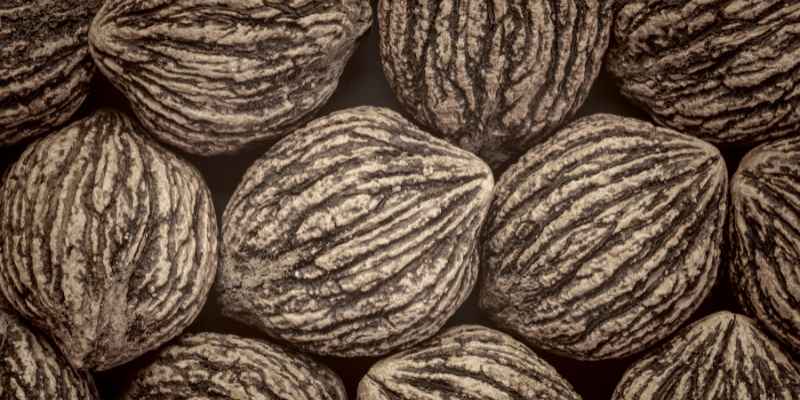To plant a black walnut tree from seed, collect the nuts after they fall, remove the husks, and soak them in water. Plant the seeds one to two inches deep in the ground during the fall.
Planting a black walnut tree from seed can be a rewarding endeavor. These majestic trees are known for their strong wood and delicious nuts. Growing them from seed allows you to witness the entire life cycle, from germination to maturity.
Black walnut trees thrive in well-drained, fertile soil and require specific conditions to germinate effectively. Understanding the process of seed preparation and planting will help ensure successful growth. This guide outlines the essential steps to plant black walnut seeds, focusing on practical tips and techniques to cultivate these beautiful trees in your own yard or garden.
Introduction To Black Walnut Trees
Black walnut trees are known for their beautiful wood and tasty nuts. They grow tall and provide great shade. Choosing black walnut trees offers many benefits. Their nuts are nutritious and loved by wildlife. The wood is valuable for furniture and flooring.
Ideal conditions for growth include well-drained, fertile soil. These trees thrive in sunny locations with plenty of space. They prefer lower slopes and floodplains. Avoid planting in areas with poor drainage.
| Condition | Ideal | Avoid |
|---|---|---|
| Soil Type | Fertile, well-drained | Poorly drained |
| Sun Exposure | Full sun | Shaded areas |
| Location | Lower slopes, floodplains | Steep slopes, narrow ridgetops |

Collecting Black Walnut Seeds
Collect black walnut seeds in autumn after they fall from the tree. The best time is from September to October. During this period, seeds are ripe and ready for collection. Ensure to choose seeds that are healthy and free from damage.
To identify viable seeds, look for nuts that are firm and have a good color. Avoid any that are soft or have visible signs of rot. Good seeds sink in water, while bad ones float. This simple test helps select the best seeds for planting.
Preparing The Seeds For Planting
To remove the husks from black walnut seeds, start by gathering the nuts. Fresh nuts are easier to handle. Use gloves to avoid staining your hands. Place the nuts in a container and soak them in water for a few hours. This helps soften the husks. Next, use your hands or a tool to peel away the husks. Make sure to wash the seeds thoroughly to remove any remaining husk residue.
For the water test, fill a bucket with water. Drop the cleaned seeds into the water. Viable seeds will sink to the bottom. Discard any seeds that float, as they are likely not suitable for planting. This simple test ensures you only plant healthy seeds for better growth.
Stratification Process
Stratification is a method used to prepare seeds for germination. It mimics natural winter conditions. This process helps break seed dormancy and promotes growth.
To stratify black walnut seeds, follow these steps:
- Collect the seeds in the fall.
- Remove the outer husk carefully.
- Soak the seeds in water for 24 hours.
- Place the seeds in a plastic bag with moist sand.
- Store the bag in the refrigerator for 60 to 90 days.
- Check the seeds regularly for moisture.
After stratification, the seeds are ready to be planted in the spring. This process is essential for successful germination.
Choosing The Right Planting Location
Choosing the right planting location is vital for a black walnut tree. Soil should be well-drained, fertile, and preferably limestone-based. Avoid areas with heavy clay or poor drainage. This tree thrives in lower north- and east-facing slopes, as well as on stream terraces.
Sunlight is crucial for growth. A black walnut tree needs full sun for at least six hours daily. While it can tolerate some shade, too much will hinder its growth. Aim for a balance of sunlight and protection from harsh winds.
Planting The Seeds
To plant black walnut seeds, dig holes that are 1 to 2 inches deep. Space the seeds at least 30 feet apart to allow room for growth. This distance helps the trees grow strong and healthy.
After planting, water the seeds thoroughly. Ensure the soil remains moist but not soggy. Regular watering is important, especially during dry spells. Aim for about 1 inch of water per week to keep the seeds hydrated.
Caring For Young Black Walnut Trees
Caring for young black walnut trees is essential for their growth. Proper watering is vital. Water the trees deeply, ensuring the soil stays moist. Mulching around the base helps retain moisture and suppresses weeds.
Use organic mulch like wood chips or straw. This provides nutrients as it breaks down. Regularly check the moisture level, especially during dry spells.
Protecting young trees from pests and diseases is crucial. Inspect the leaves and bark regularly. Look for signs of infestations or unusual spots.
Consider using natural pest repellents. Surround the trees with companion plants that deter pests. Maintain good air circulation to reduce disease risks.
Transplanting And Long-term Care
Transplanting a black walnut tree is essential for its growth. This process should occur in early spring or fall. Carefully dig around the roots to minimize damage. Place the tree in a new hole that is twice as wide as the root ball. Ensure the soil is well-drained and rich in nutrients.
Regular pruning helps maintain the tree’s shape. Remove any dead or damaged branches. Aim to prune during late winter or early spring. This timing encourages healthy growth. Fertilize the tree in early spring using a balanced fertilizer. Water the tree regularly during dry spells for best results.

Frequently Asked Questions
How Long Does It Take For A Black Walnut Tree To Grow From Seed?
A black walnut tree typically takes 10 to 15 years to grow from seed to maturity. Proper care and suitable conditions can enhance growth rates. Germination occurs within a few weeks if seeds are stratified correctly. Ensure the tree has enough sunlight and water for optimal development.
How Do You Prepare Black Walnut Seeds?
To prepare black walnut seeds, first remove the husks and rinse the nuts. Then, soak them in water. Discard any floating nuts. For optimal germination, stratify by placing seeds in a moist sand-peat mixture and store in a cool location for several weeks before planting.
How To Plant A Walnut Tree From Seed?
To plant a walnut tree from seed, collect walnuts after they fall. Remove husks and soak them in water. Discard any that float. Plant the seeds one to two inches deep in well-drained soil during fall. Ensure proper cold stratification for successful germination.
Where Is The Best Place To Plant A Black Walnut Tree?
The best place to plant a black walnut tree is in well-drained, fertile soil. Opt for lower north- and east-facing slopes, stream terraces, or floodplains. Avoid steep south- and west-facing slopes and poorly drained areas for optimal growth and health.
Conclusion
Planting a black walnut tree from seed can be a rewarding experience. With the right preparation and care, you’ll nurture a beautiful tree that benefits your landscape. Follow the steps outlined in this guide to ensure successful germination and growth.
Embrace the journey of cultivating nature, and enjoy the fruits of your labor.

